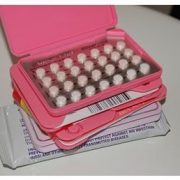Probably the best Trade Alert of 2015 that I wrote up, but never sent out, was for the ProShares Short High Yield ETF (SJB). That is a bet that makes money when the prices for junk bonds fall.
Back in May, it was clear to me that junk bond prices had hit ?LALA land.? Yields were only 200 basis points above similar maturity Treasury bonds.
Risk was being wildly mispriced. Investors were taking on a whole lot of principal risk, but were barely compensated for it.
It was a classic reach for yield. This only ends in tears.
The reason I didn?t pull the trigger is that when you sell short any kind of bond or equity, you become liable for paying the interest or the dividend. In the high yield junk realm at the time, that meant forking out 5% per annum.
That?s a big nut to cover in order to make a profit. To end up in the green on a position like this, your timing has to be perfect. Paying that kind of carry, you pretty much want prices to stat falling immediately.
As it turned out, holding firm at the time was the right thing to do. While I nailed the high for the year, Junk bonds (HYG), (JNK) declined, but not by much. Then in August, they fell like a ton of bricks.
Here we are seven months later in a completely different world.
All of the trades that prospered mightily from quantitative easing are being unwound in a hurry.
It seems like investors are only just waking up to the implications of the demise of an aggressive monetary policy that met its demise 14 months ago. It?s a bit like closing the barn door after the horses have bolted.
However, it took this week?s imminent interest rate rise from the Federal Reserve to really bring matters to a head.
Junk bonds are now yielding 9.0%, while energy related paper is well into double digits. The talk is that as many as 25% of energy junk bonds will default (click here for ?Here Comes the Final Bottom in Oil? ).
Two junk bond funds have gone under, refusing to honor redemption requests from owners. Prices are in free fall. It all has the flavor of a final capitulation.
Which means that I am finally stating to get interested in junk bonds.
This is the problem with this market. Junk bonds are the last holdout of old fashioned traders. No two issues look alike, so they can?t be commoditized. That means they can?t be subject to automated online trading. High frequency traders never touch them.
If you want to trade in junk bonds, you have to call around to other traders and investors and ask if they have any interest. You keep calling until you find someone willing to take the other side of your trade.
Needless to say, this is a tedious and time-consuming process. It is a lot like the trading world I first joined in the 1970?s.
Another problem is that Dodd Frank has banned the big banks and brokers from taking positions in this paper like they used to. That means there is no final supplier of liquidity, so it is worse than it has ever been.
It is a good rule of thumb that the junk bond yield roughly reflects the market?s default expectations. So the present 9% yield means investors expect approximately 9% of the paper to default.
And here is where you make the money.
Markets tend to wildly overshoot with their expectations. In 2009 junk bonds carried a 25% yield. The actual default rate that followed was only 2%.
Markets then spent five year repricing this reality into these securities. As a result, junk bonds were one of the best investments you could have made back then.
They were the subject of regular strong ?BUY? recommendations by the Mad Hedge Fund Trader. They eventually more than doubled in value. That?s a lot for a bond.
While today?s 9% is nowhere near 25%, we are also in nothing like a 2009 financial collapse. Call the current volatility a correction, a bout of nervousness, a setback, or even a frisson. End of the world stuff it isn?t.
Which leads me to believe that at 9%, you are being fairly compensated for your risk.
You wanted to reach for yield? Now there is some yield to reach for.
9% covers a multitude of sins.










